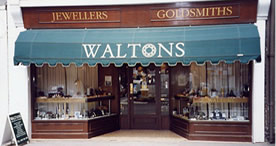GEMSTONES AND MINERALS
Although most people are familiar with famous ones, there are quite literally hundreds of different types of minerals, not all ideal for jewellery purposes, but the ones that are can sometimes be quite stunning in appearance.
The word ‘carat’ when applying to minerals refers to the weight of the stone. There are 100 points in 1 carat. Gemstones are graded depending on their size, clarity, cut and colour. The price of gemstones and minerals is dictated by their quality and rarity. The stronger the colour and the cleaner the stone, the higher the quality. If a stone is too dark or light, or alternatively too ‘included’ (with marks or has a cloudy appearance), the lower the quality.
Only the best materials mined are used in the jewellery trade. The rest are usually discarded, unless they have other uses, such as diamonds, which, because of their hardness, are ideal for engineering, tools etc., even to cut other diamonds.
It is the stone cutters job to get the largest stone of the highest quality out of the raw materials he has. All the ‘off-cuts’ can be used for smaller ones.
Translucent gemstones are usually faceted. This creates the ‘fire’ in the stone. Opaque gemstones are usually cabochon cut which gives a domed appearance whether round or oval. Having them faceted would serve no purpose.
There are a number of organic gems - pearls being the most popular. A natural pearl is formed when an irritant such as a grain of sand, gets inside the oyster. Its natural defensive system is to coat the irritant with layers of nacre, which creates the lustre. These layers will follow the contours and shape of the irritant. This is why natural pearls are so expensive in comparison to cultured pearls. These are formed by basically giving nature a helping hand and inserting a mother-of-pearl bead to act as the irritant.
DIAMOND: The diamond is probably the most frequently set in jewellery. Although it is the world’s hardest natural substance, its crystal properties are such that it could split (cleave) if hit in a particular way. Although mainly used in white, diamonds can come in many different colours-blue, green, yellow, red, pink and brown. The ‘fire’ of a diamond is quite unique and distinguishes it from substitutes. Hardness 10
Geographical source- Brazil, Russia, India and S. Africa.
CORUNDUM: These are the second hardest stones to diamond. Hardness 9/10 Varieties are RUBY - red; SAPPHIRE - blue, also yellow, green, purple, colourless and many other shades referred to as fancy sapphires. Star-rubies and star-sapphires, which show a star-effect, are used mainly for rings. These are always cabochon cut to show the phenomenon.
Geographical source- Australia, Burma, India, Sri Lanka, Thailand and the USA
BERYL.: The main gemstones in this hardness group are EMERALDS and AQUAMARINES. These are much softer than corundum (7-8/10). Emerald is a deep velvety-green to grass-green and usually contains inclusions. Flawless pieces of good colour are rare and command a high price. It is a brittle stone and should be worn carefully. Aquamarine is a pale ‘electric’ blue to greenish-blue and is usually slightly harder than emerald.
Geographical source- Brazil, Russia, India and the USA
QUARTZ.: There are many varieties of quartz used in jewellery. AMETHYST (purple), CITRINE (yellow-smoky brown), rock crystal (colourless). AGATES, BLOODSTONES, CORNELIAN and JASPER belong to another form of quartz and are normally opaque. Hardness 7/10.
Geographical source- occurs in large quantities all over the world.
GARNET: The garnet is also found in many varieties: HESSONITE (golden yellow- reddish cinnamon brown), PYROPE (deep red), ALMANDINE (deep red with purplish tinge), DEMANTOID (green). Hardness 6.5-7.5/10.
Geographical source- Brazil, India, South Africa, Sri Lanka and the USA
TOPAZ.: The yellow and sherry-brown varieties are the most common although it may also be colourless or blue to green. Topaz that are red or pink rarely occur naturally and are normally treated brown stones. Hardness 8/10.
Geographical source- Brazil, Germany, Mexico and the USA
OPAL.: There are three main varieties
Geographical source- Australia, Brazil and Mexico.


